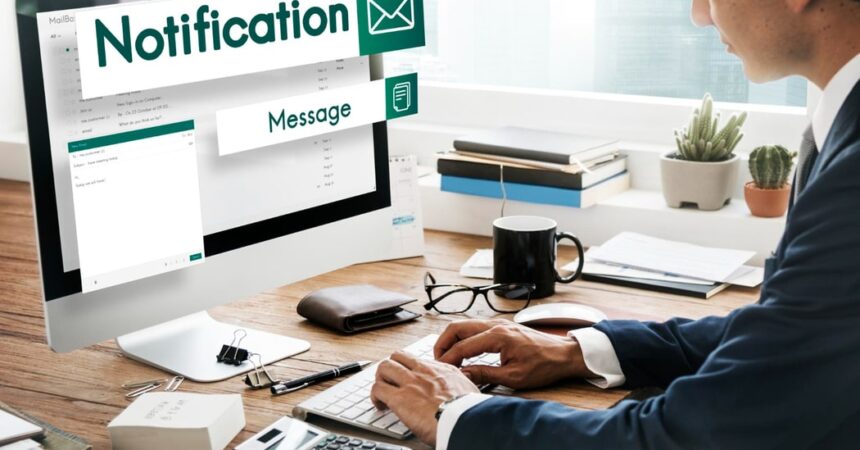Marketing has become integral to many companies’ business models. It has solidified itself as a key part of sales and company growth. However, marketing strategies depend on whether the target audience is business-to-business (B2B) or business-to-customer (B2C) marketing.
For anyone who doesn’t know what B2B marketing is, it refers to any marketing strategy or content that leans towards other businesses and organizations. Its goal is to get other companies familiar with the brand while showcasing the value of the products and services.
B2B differs from B2C because B2C is a set of marketing strategies targeting customers. Aside from different techniques, other aspects that separate the two are the applications and communications.
The process of B2B marketing targets the needs of individuals who make purchases on behalf of the company, making the organization the customer. In contrast, B2C marketing targets the needs of individuals looking to make purchases, so they are the customer.
Some examples of B2B companies include IBM, Hubspot, Google, and Slack Technologies. For B2C companies, there are Facebook, Walmart, Alibaba, and Netflix.
If you’re a B2B company, identifying the appropriate B2B marketing strategy to use in specific projects can be difficult. However, email marketing is a common strategy you can utilize. The following section discusses effective B2B email marketing strategies, including tools and best practices.
B2B Email Marketing Best Practices

Email marketing itself sounds simple enough, but there are practices that businesses need to follow, especially since it involves other organizations. Nobody wants to send out an unorganized email without proper structure.
Ideally, the best outcome is to have a process geared towards educating the audience about your business. To do this, begin with the first best practice strategy on the list.
1. Building an email list
One of the things any company should do before sending emails is to have an email list. Still, the problem with that is the audience is probably not suitable for the business and may not have permission to send them emails. For B2B, one of the biggest mistakes companies can make is buying an email list.
Businesses need to get permission from their audience if they can send emails. Otherwise, landing on their inbox means that the company is a guest; if it was through a bought email list, they become uninvited guests.
The target should provide the email address themselves to get permission. That way, they’ll know if the company sends an email and will address it accordingly. Once you’ve obtained your audience’s permission to send emails, how do you take advantage of it? First off, provide value.
Use lead magnets
A lead magnet is a free resource or service in exchange for an email address. It’s primarily an educational piece of content, helping the audience solve a problem while gaining more awareness. These come in the forms of eBooks, whitepapers, masterclasses, case studies, and webinars.
What makes a good lead magnet is that it’s easy to consume, relevant, and readily available. You can attract your audience to their lead magnet through an online opt-in form.
An opt-in form tells the audience about the benefits they’ll have if they use the lead magnet. It’s a persuasive copy that compels users to submit their email addresses in exchange for value. Aside from the website, businesses can run ads targeting the opt-in landing page and share it on social media.
Update products
The second way to grow an email list is through product updates. You can tell your audience to sign up for an email list, so they can be the first ones to know about your new products or features. It’s an effective strategy, especially if your company is an established name in digital media.
Some product-related announcements you can send via email are:
- Sneak peeks or teasers
- Bug fixes or technical updates
- Next product plans
- Changes in pricing models
- Product launches
With these types of emails, you mustn’t just establish the what but also the why. Most clients don’t care about your brand’s new features and functionalities. They care about how these will benefit them.
Be straightforward
The third way to earn more email addresses is to be straightforward. You can say that you’ll offer valuable information such as tips and tricks about the industry through free resources and exclusive discounts.
With a newsletter, you can provide this to your non-email audience to instill the Fear of Missing Out (FOMO) aspect and compel them to sign up. You can share these through social media, websites, and exclusive industry groups.
2. Choosing the appropriate email marketing service
After completing the email list, the second step is choosing which email marketing to choose. MailChimp and ActiveCampaign help companies set up campaigns and automate processes. They also allow users to track their analytics, showing them what’s working and what changes need to be made.
Once the email marketing service is chosen, there are a few extra steps to ensure that optimization and integration work properly. These involve mobile optimization, system integration, and automation/response handling.
Mobile Optimization
Many people spend plenty of time on their mobile devices for leisure or work-related tasks. Numerous professionals read their emails on their mobile phones, so mobile optimization plays a significant role when investing in an email marketing service.
Why does optimization matter? Depending on the software’s template, it may only be appropriate for users on a laptop or tablet. The pages, tabs, and views may only apply to these devices, resulting in an odd-looking template on mobile phones.
Mobile optimization ensures that professionals reading emails and doing other tasks have a proper template, making it easy to use.
Integration
Businesses with Customer Relationship Management (CRM) software can integrate it with their email marketing software to save time manually updating and sending the email list. It’ll automatically manage new updates and customer data while ensuring the content is sent out.
Automation/Response handling
Companies that just started email marketing will likely have a small email list, making it easy to respond to people. However, manually sending responses will be difficult as the email list grows. The email marketing software should have a feature that automatically responds, and all the company needs to do is schedule the responses.
3. Content Creation
Like any email, content is the main focus of the receiver. Coming up with content consistently can be challenging, especially if a business plans to send one weekly email. However, with an email marketing service, it’s possible to automate the entire process and set the content in advance.
One thing to remember is not to spam the audience with content. The priority should be the quality of these emails rather than the quantity, so here are some best practices to consider when creating emails.
Have engaging subject lines
Subject lines act as a teaser of what the content is about. Audiences judge emails based on their subject lines. It may seem like a dismissible part of an email, but it’s more crucial than you think.
Imagine that your email is lumped between hundreds of other brand emails in a person’s inbox. What would make them click on yours?
If you can’t catch your audience’s attention, they’ll unlikely want to read the content, let alone open the email. It’s perfectly acceptable to take some time to formulate the subject line as it’s the first line of offense to the email’s content. The perfect subject line should show urgency, personalization, relevance, and curiosity.
Ensure that email designs are responsive
One statistic from 2019 indicated that 60% of email opens are from mobile devices. Hence, it would be best to prioritize designing emails for mobile devices. However, this doesn’t mean you should neglect other devices. Make sure your emails are responsive for all, from tablets to desktops.
Email designs shouldn’t just look good but also be responsive, meaning all links should be working and directed to the right URL or action.
Segment and personalize emails to reach the relevant audience
An established business can have a collection of emails, but not all of them will be appropriate for certain emails. Different subscribers might be at various stages of the buyer’s journey, so they’re looking for other solutions. Segmenting the emails can help you relate to your audience better while providing a personal touch.
You can attribute that personal touch to a customer persona from data about individual profiles. It can increase motivation for the audience to act, leading to more traction.
Have one call-to-action (CTA) per email
An integral part of any email is to have a compelling CTA. A CTA at the end of an email will allow the audience to focus more on the content. It can pique their interest and potentially click on a link leading them to the company’s website or pages.
One mistake people should avoid including more than one CTA. Having two, three, or even four CTAs can confuse the email’s contents because the audience would not know where to focus. It poses them with a problem of where they should click first and ultimately can end up in them not clicking at all, losing interest entirely.
B2B Email Marketing Trends 2024

As 2024 continues to progress, there are emerging trends that businesses are aiming to focus on. Below is a list of three email marketing trends this year.
1. Measuring the ROI of marketing activities will be a challenge
Measuring ROIs can be easy for some activities, such as tracking a social media campaign. However, other activities, such as analyzing sales from social and blog content, can be a complex task.
Companies can consider A/B testing in various marketing activities and ROI tracking to identify which platforms have the biggest ROI for the business.
2. B2B marketers are planning to increase investments in influencers
One thing that has become a prominent strategy in the industry today is investing in influencers. Influencer marketing has played a big role in growing a company’s brand and target audience. Influencers who partner with businesses promote their brand on social media platforms such as Instagram and YouTube.
The same applies to B2B marketers who want to ensure their products and services are showing up on social channels with partnerships. It’ll become a major figure in the marketing business as influencer marketing is set to become a $16.4 billion industry by the end of the year.
It can be tempting to partner with several influencers, but it isn’t smart to go for every influencer. Each has its niche audience, so depending on your company’s products and services, it may not relate to a specific group of people. It’s best to do some initial research on them and determine which ones are appropriate.
The number one goal for 2024 is to increase brand awareness
There’s no question that several businesses have shut down because of the pandemic, and small companies are trying to raise their brand awareness. In 2024, B2B marketers will prioritize brand awareness to build trust and long-term loyalty with their target market.
Additionally, building brand awareness can increase engagement levels, product advertising, and closed deals. The more people are aware of a brand, the more opportunities there will be, which B2B marketers aim for.
A Long but Worthwhile Process
B2B marketers have many things to consider if they want an efficient and successful email marketing process. While it may seem like a lot, the efforts will be worthwhile as email marketing is an excellent way to grow your business and generate more opportunities.
The tips discussed above act as email marketing hacks any business can follow. Sometimes it’s just about keeping things simple and having a primary focus for the target audience to absorb.
Once you become more accustomed to these email marketing strategies, keeping up with trends is important, as these can help boost its success.
For B2B, audiences want to be educated about a product or service. You may provide valuable information in exchange for their email addresses. Pair that with a compelling CTA, and your audience is set to grow with many opportunities available.

